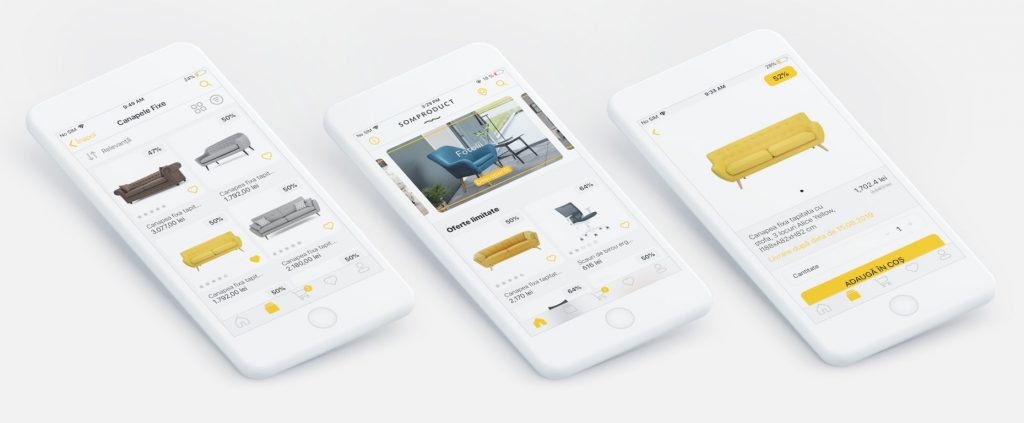Table of contents
Mobile commerce on the rise
The growth of smartphone usage has changed the retail landscape and consumer behavior drastically. A large share of online purchases are now taking place on mobile, especially in apps. In 2018, global time spent in app nearly doubled, up 45% from 2016, including a 70% increase in the US. And this trend is only increasing from here: By 2021, mobile transactions are projected to double on a worldwide scale, accounting for 75% of total ecommerce sales.
(Data: Global M-Commerce 2018 Report, Researchandmarkets.com)
People today have 2x more interaction with brands on mobile more than anywhere else, including desktop, in-store,.. Providing an intimate, direct channel to consumers, mobile has grown into the primary way for consumers to connect with their favorite brands. This represents a massive opportunity for brands to reach, influence and convert shoppers.

On the other hand, it also raises the bar of what they expect from your brand. More than ever before, consumers have higher expectations of the experiences they have with brands on their phones. If their expectations aren’t met, they’re likely to turn their heads somewhere else, seeking for a better experience. That puts even more pressure on brands to improve the user experience on mobile, which, in turn, is shifting the nature of loyalty.
One of the most important drivers of mobile commerce growth is the development of mobile applications. Today’s consumer spends an average of 3 hours per day on mobile, and most of the time is spent within apps. We’re in the age of mobile apps where smartphone play an increasingly important role in consumer’s shopping journey. As mobile shopping growth keeps increasing, apps are top of mind for retailers to enhance the overall customer experience and drive business growth.
(Data: The State of Mobile 2019 Report, AppAnnie)
New opportunities come with new challenges
With shifting customer behaviors, brands are facing a bigger challenge. According to a research by Google, 73% users will switch from a poorly designed mobile experience to an alternative one that make shopping easier. At the same time, consumers are willing to spend up to five times as much for a great shopping experience compared to a poor one (Forrester data).
Now more than ever, a strong mobile experience is critical for ecommerce success. Optimizing mobile app design for better user experience is a must for brands to keep up with the transitions most consumers are making to mobile. Mobile experiences include unique interactions that don’t exist in the desktop world. It requires a whole new set of principles and best practices to shape a strong mobile experience, so there are different areas to improve when designing your mobile app.
Optimize mobile app design for a better shopping experience
The principles of creating great user experience may look different for every brand, but at the end of the day, it all boils down to address customer needs and help them do what they want to do throughout their shopping experiences. These experiences include all interactions shoppers have with your brand on your mobile app: search for products, browse the catalog, add items to cart, fill information to check out and more.
The more helpful experience you give your app users, the more you can keep them loyal to your brand. Growing long-term relationships with loyal customers is important if you want your business to be successful.

The ultimate guide to mobile app design for ecommerce
In this five-chapter guide, we’ll go deep into different aspects of mobile user experience for ecommerce app to help you make customer-focused decisions that improve your app design. The guide provides a view into how users interact with your app in a shopping context while introducing a whole host of pitfalls to watch out for when designing an ecommerce app. Typically there are several usability issues that potentially keep users from completing their desired tasks. These issues are analyzed and refined into 30 principles on how to best design your mobile app for ecommerce. Understanding what makes a great mobile experience is the key to remove friction from the shopping journey and make it easy for your customers to convert.
Streamlined mobile user experience has transformed from a nice-to-have advantage to the critical part of running a business. As mobile commerce and especially app transactions continue to rise, brands should take note: In order to grow, it’s imperative to stay on top of the user experience for mobile shopping apps. Optimization of mobile app design will reflect the changes that drive engagement, loyalty and eventually revenue.




